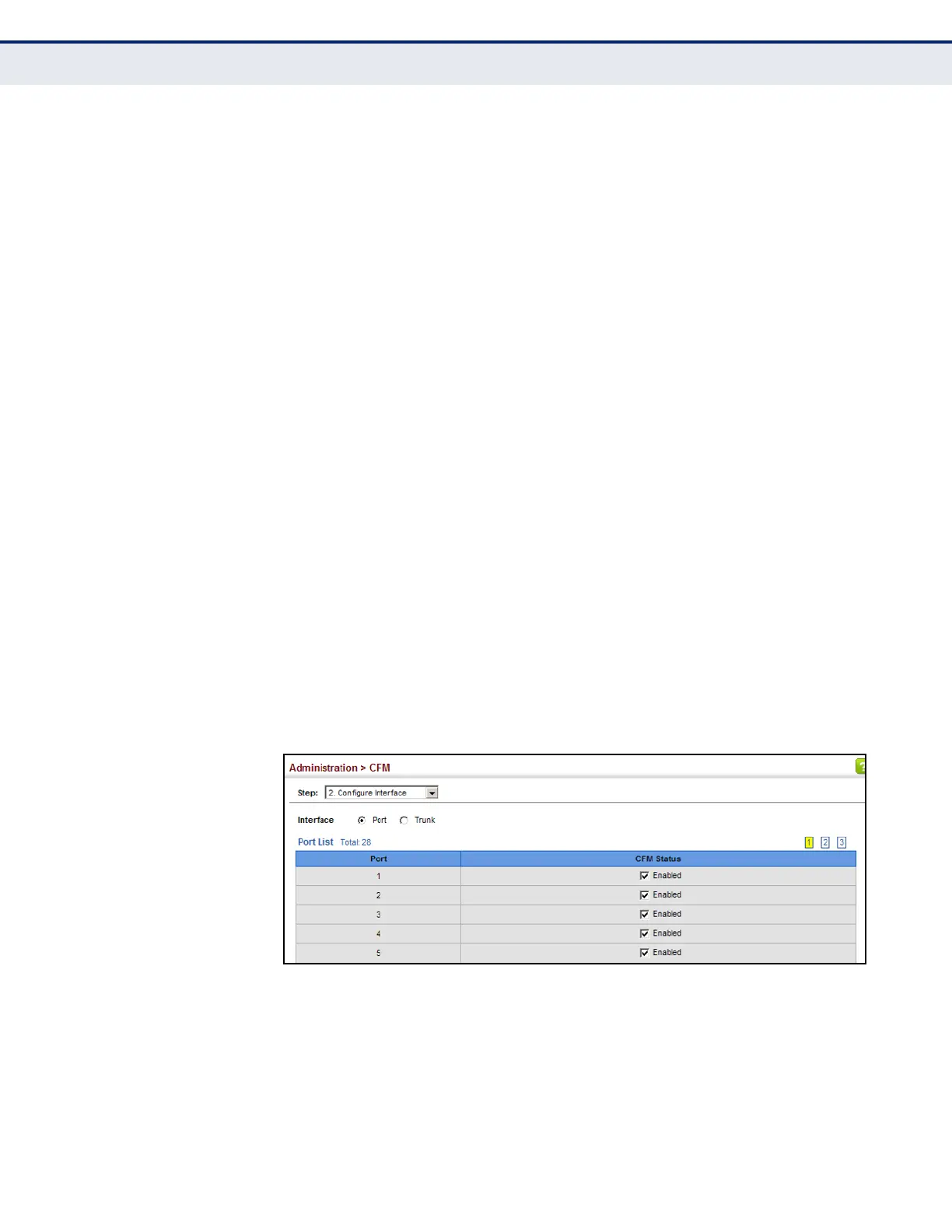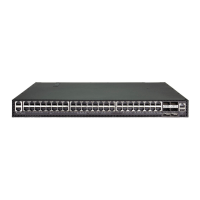C
HAPTER
14
| Basic Administration Protocols
Connectivity Fault Management
– 519 –
CONFIGURING
INTERFACES FOR CFM
CFM processes are enabled by default for all physical interfaces, both ports
and trunks. You can use the Administration > CFM (Configure Interface)
page to change these settings.
CLI REFERENCES
◆ "ethernet cfm port-enable" on page 1323
COMMAND USAGE
◆ An interface must be enabled before a MEP can be created (see
"Configuring Maintenance End Points").
◆ If a MEP has been configured on an interface, it must first be deleted
before CFM can be disabled on that interface.
◆ When CFM is disabled, hardware resources previously used for CFM
processing on that interface are released, and all CFM frames entering
that interface are forwarded as normal data traffic.
WEB INTERFACE
To enable CFM on an interface:
1. Click Administration, CFM.
2. Select Configure Interface from the Step list.
3. Select Port or Trunk.
4. Enable CFM on the required interface.
5. Click Apply.
Figure 294: Configuring Interfaces for CFM
CONFIGURING
CFM MAINTENANCE
DOMAINS
Use the Administration > CFM (Configure MD) pages to create and
configure a Maintenance Domain (MD) which defines a portion of the
network for which connectivity faults can be managed. Domain access
points are set up on the boundary of a domain to provide end-to-end
connectivity fault detection, analysis, and recovery. Domains can be
configured in a hierarchy to provide management access to the same basic
network resources for different user levels.

